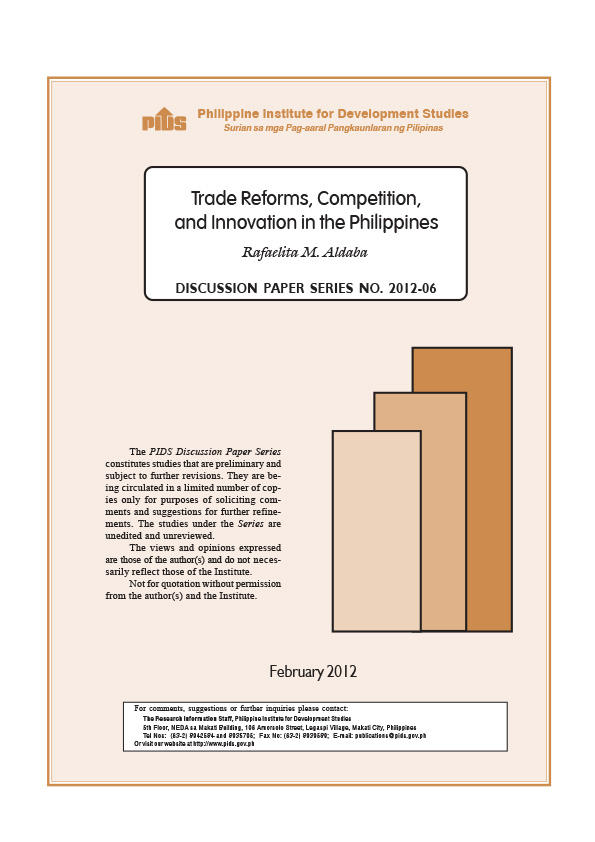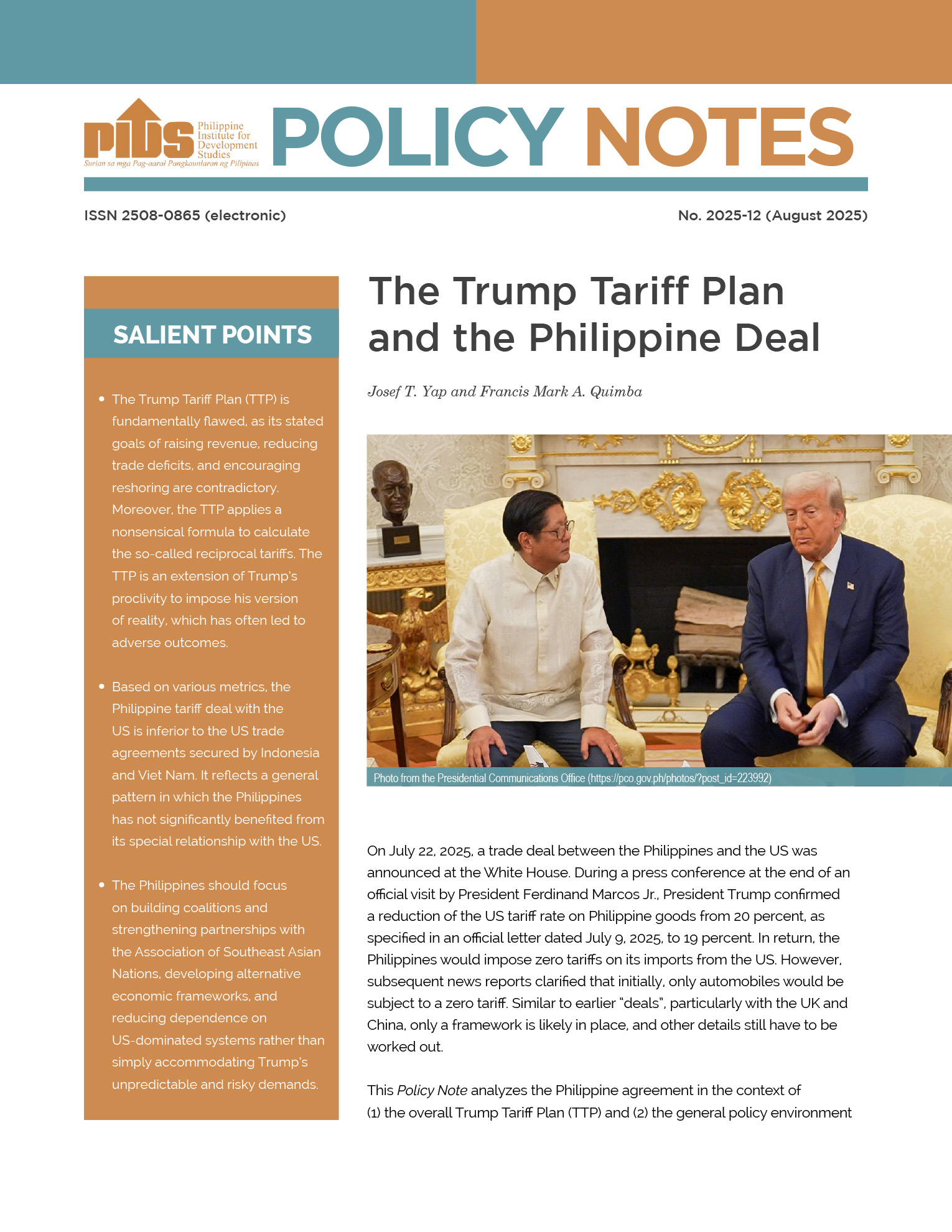What is the impact of the removal of barriers to trade on the firms` innovative activities? Does the increase in competition arising from trade reforms lead to increases in innovation? This paper attempts to examine the link between trade liberalization and innovation using firm panel data on the Philippine manufacturing industry. With the framework of Impulliti and Licandro (2009, 2010) as guide, a two-stage approach is tested where trade and innovation are linked via competition. A reduction in tariffs leads to an increase in competition as price cost margins fall due to the increase in the number of players in the domestic market. With the reduction in price cost margins, profits fall and increases the productivity threshold above which firms can operate profitably. This forces inefficient firms out of the market and resources are reallocated from exiting firms to the higher productivity surviving firms which innovate at a faster pace. The results show that trade liberalization has significant positive impact on innovation through competition.
Given the crucial role of competition in the relationship between trade liberalization and innovation, it is important for the government to maintain the contestability of markets. The presence of trade barriers or government regulations that limit market entry can create inefficiencies leading to reduced long-term growth. These weaken competition and prevent structural changes from taking place resulting in resources being tied to low-productivity industries. Weak competition reduces the pressure on firms to adopt new technology or innovate, resulting in low growth of productivity and a loss of competitiveness. Despite the two decades of implementing liberalization policy, competition and productivity growth remained weak not only due to the presence of structural and behavioral barriers to entry, but also to the country`s inadequate physical and institutional infrastructure. Due to the fundamental weakness of competition in a lot of major economic sectors, the gains from liberalization remained limited and slowed down the country`s economic growth.
Citations
This publication has been cited 5 times
- Cissokho, Lassana. 2015. Power outages and the productivity of small and medium enterprises: The role of formality. EcoMod2015 8239. EcoMod.
- Lee, Cassey and Dionisius Narjoko. 2015. Escaping the middle-income trap in Southeast Asia: Micro evidence on innovation, productivity, and globalization. Asian Economic Policy Review, 10, no. 1, 124-147. Japan Center for Economic Research.
- Lee, Cassey and Yoshifumi Fukunaga. 2014. ASEAN regional cooperation on competition policy. Journal of Asian Economics, 35(C), 77-91. Elsevier.
- Lee, Cassey and Yoshifumi Fukunaga. 2013. ASEAN regional cooperation on competition policy. Working Papers DP-2013-03. Economic Research Institute for ASEAN and East Asia (ERIA).
- Narjoko, Dionisius and Shujiro Urata. 2019. Firm adjustment to trade policy changes in East Asia. ADBI Working Papers 945. Asian Development Bank Institute.













